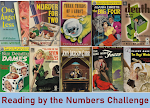 Dr. L. H. (Lionel Humphrey) Salt wants nothing more than to leave the depressing mill town of Birkden behind him. He's a middle-aged widower who likes whiskey, cigars, books, and music. He plans to leave for warmer climes. And he'll gladly do so as soon as he can find out what has happened to one of his patients. Noreen Wilks has been missing for three weeks and nobody seems particularly interested. The police assume she's just one of these flighty girls who has run off with a man or headed off to London for a more exciting life than what can be found in a backwater mill town. But Salt is pretty certain she must be dead--or nearly so. Because Noreen has a rare kidney disease that requires special medication and treatment and if she doesn't check in with a doctor on a regular basis, she will die.
Dr. L. H. (Lionel Humphrey) Salt wants nothing more than to leave the depressing mill town of Birkden behind him. He's a middle-aged widower who likes whiskey, cigars, books, and music. He plans to leave for warmer climes. And he'll gladly do so as soon as he can find out what has happened to one of his patients. Noreen Wilks has been missing for three weeks and nobody seems particularly interested. The police assume she's just one of these flighty girls who has run off with a man or headed off to London for a more exciting life than what can be found in a backwater mill town. But Salt is pretty certain she must be dead--or nearly so. Because Noreen has a rare kidney disease that requires special medication and treatment and if she doesn't check in with a doctor on a regular basis, she will die. Noreen isn't the only one missing though. Maggie Culworth's father, an unassuming owner of a bookshop, has disappeared as well. He's never gone away without telling Maggie and/or her mum and now he's packed a small suitcase and headed for Birkden. Maggie's determined to find out what has happened and when a letter leads her to the rooming house where Noreen Wilks used to live, she hears the name Dr. Salt mentioned in connection with the missing girl. Not sure how he fits in, Maggie goes to Salt for help finding her father. The doctor becomes convinced that there is more to the disappearances than meets the eye and assures Maggie, that while he believes Noreen to be dead--most likely from foul play--he is just as certain that her father is okay.
Their investigations lead them to reexamine the suicide of a young man who was in love with Noreen, run-ins with some local toughs who want nothing more than for Salt to leave town, and a wild evening at a local night spot which ends with Salt finding the final resting spot of his young patient. With everyone from the local police to the man who runs the town to small-time punks trying to run him out of town, Salt is even more determined to discover who wanted his patient dead. Of course, he does so and reunites Mr. Culworth with his worried family.
Dr. Salt is a rather enigmatic character--very self-assured and imposing, he certainly isn't going to be intimidated by the big shot who runs the town or the police or the local toughs who threaten him if refuses to leave; and yet he is very attentive to Maggie and ready to play the hero when they're in danger. I have to confess, I thought he was much older than a youngish middle-age, so when he and Maggie wind up together at the end I was a bit surprised. I think I got it into my head that the reason he was giving up his up practice was retirement (so I'm thinking he's in his sixties). Not that this had much to do with my enjoyment of the novel--but it's part of my impressions.
Salt and Maggie make a good team and they work well together, so it's not surprising that they wind up a couple (once you figure out the age gap isn't that big). Their personalities play well off of each other as well. The rest of the characters are also well-drawn and the mystery plot is fairly good, though I do think the motives are a bit convoluted. Overall, an entertaining story by an author with a flair for characters and diaglogue. ★★★ and a half.
[Finished on 8/22/17]
************************
Published in 1966, this fulfills the Suitcase/Briefcase category on the Silver Scavenger Hunt card.








































